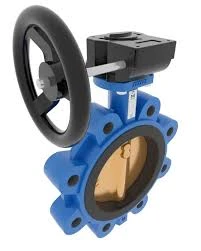dec . 05, 2024 09:35 Back to list
water ball valve
Understanding Water Ball Valves A Comprehensive Guide
Water ball valves are widely used in plumbing and industrial applications due to their effective control over the flow of water and other liquids. These valves are designed to manage the flow through a pipe by using a spherical object—known as a ball—that features a hole, or port, through its center. When the ball is rotated, the flow can be stopped or allowed to pass through, providing a simple yet efficient means of regulating liquid movement.
How Water Ball Valves Work
The working principle of a water ball valve is straightforward yet ingenious. When the valve is in the closed position, the ball is turned so that the solid part blocks the flow of water. To open the valve, you simply turn the handle 90 degrees, allowing the hole in the ball to align with the pipe's flow. This design allows for quick operation, with full opening and closing achieved within a quarter turn. This mechanism not only saves time but also reduces the risk of leaks compared to traditional valves that may require multiple turns to open or close.
Advantages of Water Ball Valves
1. Durability Water ball valves are known for their durability and longevity. Made from robust materials such as brass, stainless steel, or plastic, these valves can withstand high pressure and various environmental conditions. Their resistance to corrosion makes them especially favorable in both residential and industrial settings.
2. Low Pressure Drop One of the key benefits of using a ball valve is the minimal pressure drop when the valve is open. This means that the liquid can flow freely without significant obstruction, making it energy efficient and suitable for applications requiring high flow rates.
3. Versatility Ball valves are highly versatile and can be used in a variety of applications including water supply systems, heating systems, and even gas pipelines. Their ability to handle various types of liquids and gases ensures that they can be implemented in numerous industries.
water ball valve

4. Quarter Turn Operation As mentioned earlier, the simple quarter-turn operation of a ball valve allows for quick and easy access. This is particularly useful in emergency situations where rapid shutoff of water flow is essential.
Common Applications
Water ball valves are prevalent in both residential and commercial settings. In homes, they are often used in shut-off valves for sinks, toilets, and other plumbing fixtures. In industrial applications, they are used in water treatment facilities, chemical processing, and irrigation systems. Their reliability and ease of use make them a preferred choice for engineers and maintenance personnel alike.
Installation and Maintenance
Installing water ball valves is a relatively straightforward process, but it does require some basic plumbing skills. It is important to ensure that the valve is installed in the correct orientation, following the directional arrows indicated on the valve body. Regular maintenance is also essential to ensure optimal performance. This includes periodic inspections for leaks, checking the condition of the handle, and ensuring that the valve operates smoothly without any resistance.
Conclusion
In summary, water ball valves are a crucial component in managing the flow of liquids in various applications. Their durability, efficiency, and ease of use make them an excellent choice for both residential and commercial plumbing systems. Whether you are an engineer, plumber, or a homeowner looking to upgrade your plumbing fixtures, understanding the functionality and benefits of water ball valves can significantly enhance your decision-making process regarding fluid control systems. By choosing the right ball valve for your needs, you can ensure a reliable and efficient flow of water in your application.
Share